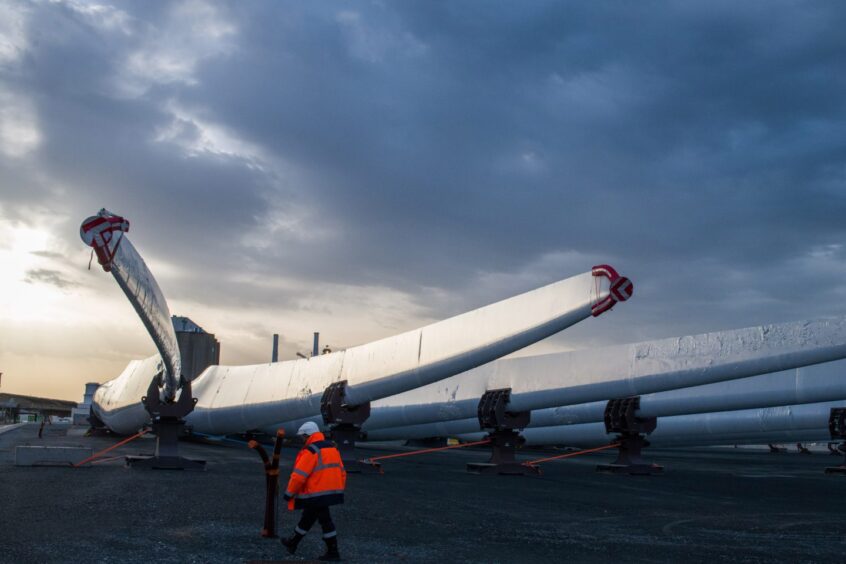
Siemens Energy AG (DE:ENR) has told customers it plans to produce its biggest wind turbine, potentially toward the end of the decade, as the company seeks to maintain its lead in one of the fastest-growing energy sectors.
The firm aims to roll out an offshore generator that can produce around 21 megawatts of power, overpowering the biggest machines offered by Chinese competitors, according to people familiar with the matter who asked not to be named because the information is private.
The planned unit would be about 40% more powerful than the company’s current largest turbine, which has blades 115 meters (377 feet) long. The move could reignite a race among western companies to unleash larger machines, which was put on hold as the industry faced steep losses in recent years.
Siemens Energy’s wind unit has been in turmoil due to supply-chain bottle necks, soaring costs and quality problems. Much of the pain has been from the onshore business, while it maintained its role as the biggest supplier of turbines for wind farms at sea outside China.
Last year, the European Union granted €30 million to Siemens Gamesa to test what it said would be the “world’s most powerful wind turbine prototype” at a facility in Osterild, Denmark. But the award didn’t include any details of the size of the machine or when it would potentially come to market.
“We will only decide whether we will ultimately install a new product in a commercial project after careful testing,” a Siemens Energy spokesperson said in a statement.
Challenges Ahead
The company also faces increasing competition from its major rival, Denmark’s Vestas Wind Systems A/S, which has increased focus on the offshore market after deciding to buy out its joint venture partner in 2020. Vestas Chief Executive Officer Henrik Andersen has argued that turbines, which are now as large as skyscrapers, are big enough.
While companies previously rushed to release new models as quickly as possible, Siemens Energy and its competitors slowed down to try and deliver more profits from current versions. A massive new turbine would signal that Siemens Energy sees a shift in the marketplace.
In the past, increasing turbine size has helped bring down the cost of energy produced by a wind park. But recent issues with quality and reliability in the industry could test customers’ appetite. A recent offshore wind auction in New York failed because GE Vernova Inc. said it wouldn’t be able to deliver a new, bigger turbine that successful bidders had planned to buy.
